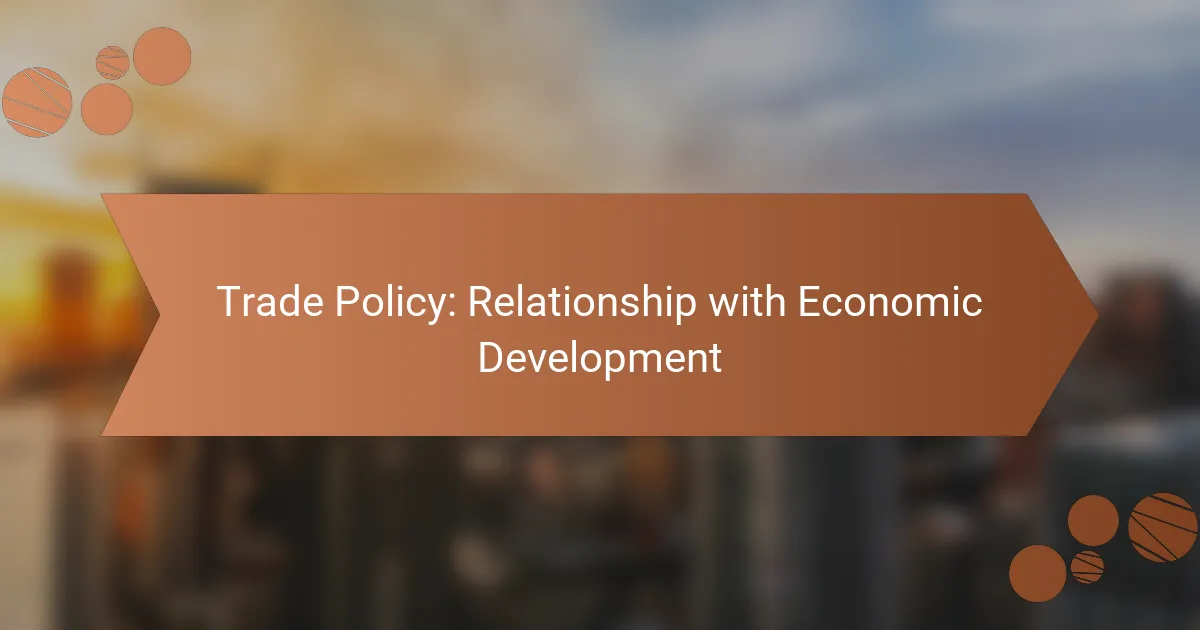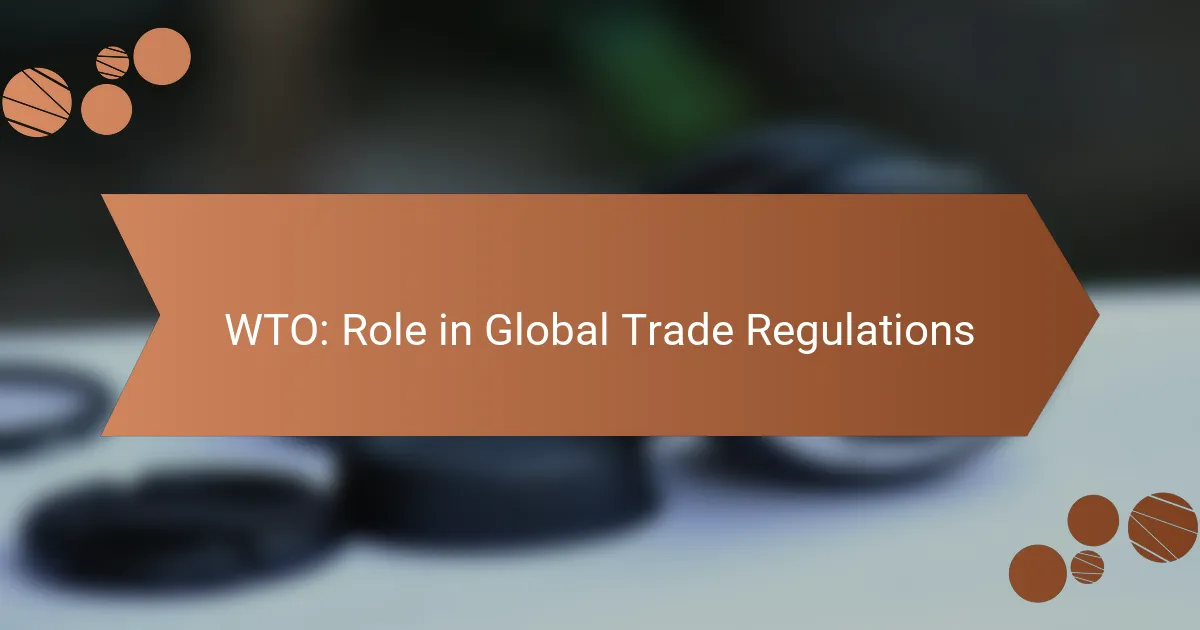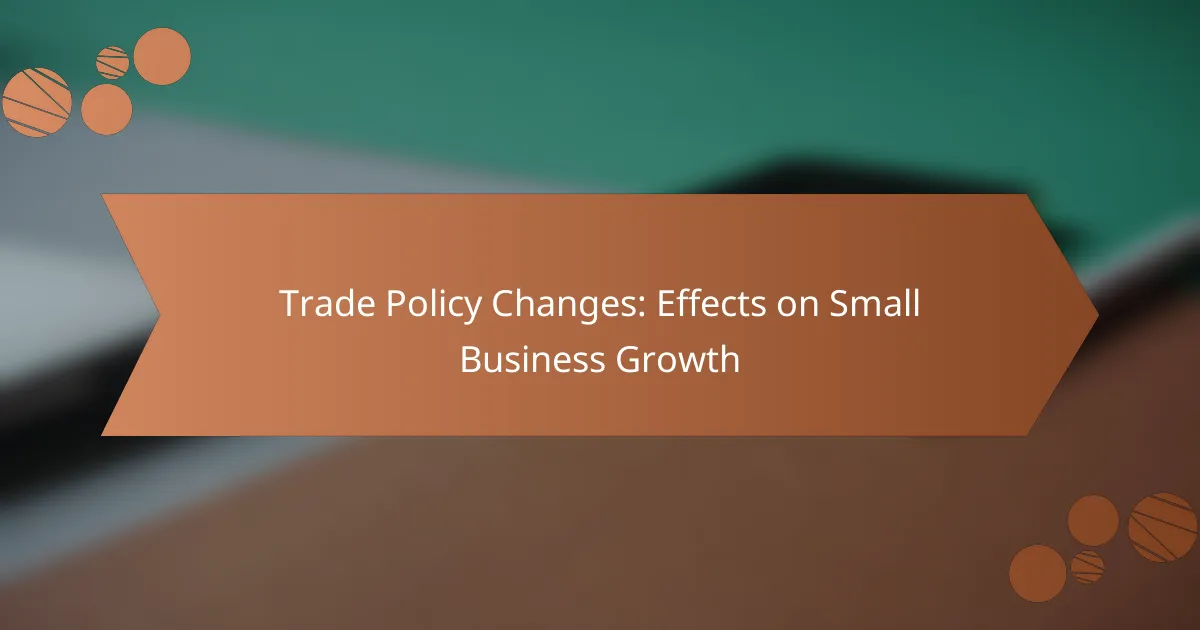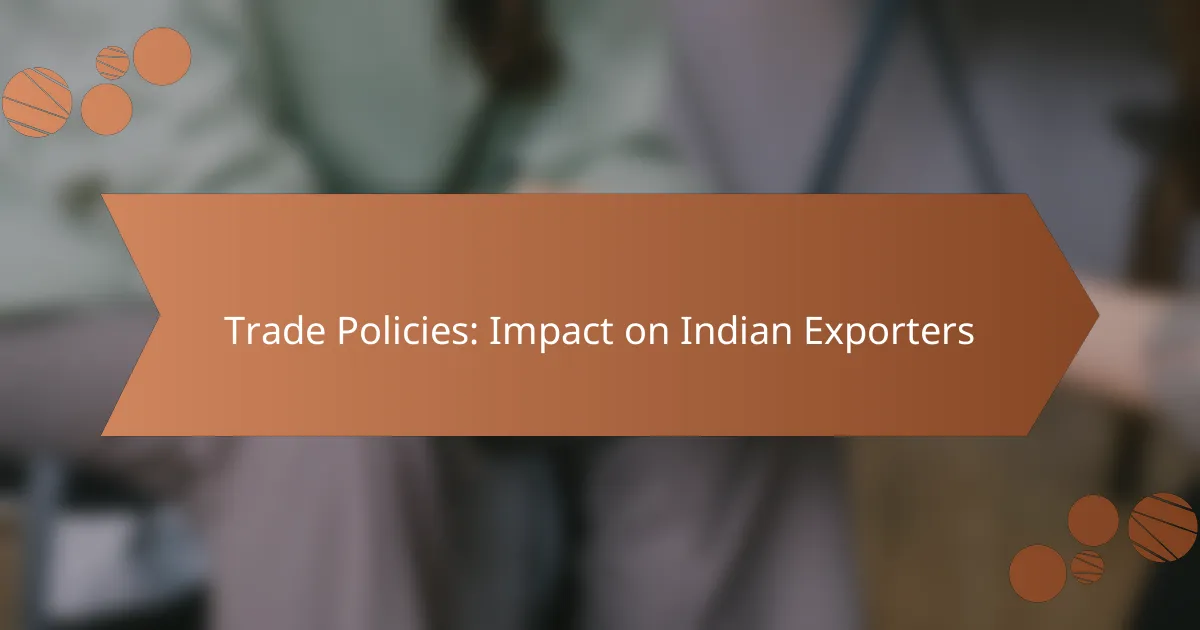Trade policy plays a crucial role in shaping economic development by determining market access, influencing job creation, and directing investment flows. By establishing tariffs, trade agreements, and regulatory standards, countries can enhance their competitiveness and stimulate growth across various sectors, ultimately impacting their economic landscape.

How does trade policy impact economic development in the United States?
Trade policy significantly influences economic development in the United States by shaping market access, job creation, and investment flows. Effective trade agreements can enhance competitiveness and stimulate growth across various sectors.
Increased market access
Increased market access allows U.S. businesses to sell their products and services in foreign markets, leading to higher sales and revenue. Trade policies that reduce tariffs and eliminate trade barriers can open up new opportunities for American exporters.
For instance, agreements like the United States-Mexico-Canada Agreement (USMCA) have expanded market access for agricultural and manufacturing sectors, benefiting local economies. Companies that leverage these agreements often experience growth in international sales, which can contribute to overall economic development.
Job creation in export sectors
Job creation in export sectors is a direct benefit of favorable trade policies. When U.S. companies expand their reach internationally, they often need to hire more employees to meet increased demand for their products.
According to various studies, export-related jobs tend to pay higher wages than non-export jobs, which can lead to improved living standards for workers. For example, sectors like technology and agriculture have seen significant job growth as a result of trade agreements that promote exports.
Investment attraction
Trade policy can attract foreign direct investment (FDI) by creating a stable and predictable environment for investors. When the U.S. establishes favorable trade agreements, it signals to foreign companies that the market is open for business.
Regions with strong trade policies often see increased investment in infrastructure and technology, which can further enhance economic development. For example, states that actively promote their trade advantages may attract multinational corporations looking to establish operations in the U.S., leading to job creation and economic growth.

What are the key components of trade policy?
Trade policy consists of various components that shape a country’s economic interactions with others. Key elements include tariffs, trade agreements, and regulatory standards, all of which influence trade flows and economic development.
Tariffs and trade barriers
Tariffs are taxes imposed on imported goods, making them more expensive and less competitive compared to domestic products. Trade barriers, which can include quotas and import licenses, restrict the quantity of goods entering a country, further protecting local industries.
Countries often use tariffs and barriers to support emerging industries or respond to unfair trade practices. For instance, a country may impose a 10-25% tariff on specific imports to encourage local production and job creation.
Trade agreements
Trade agreements are treaties between countries that outline the terms of trade, including tariff reductions and trade facilitation measures. These agreements can be bilateral (between two countries) or multilateral (involving multiple nations), aiming to enhance economic cooperation and reduce trade barriers.
Examples include the North American Free Trade Agreement (NAFTA) and the European Union (EU) single market. Such agreements can significantly boost trade volumes and economic growth by providing preferential access to markets.
Regulatory standards
Regulatory standards refer to the rules and guidelines that govern product quality, safety, and environmental impact. These standards ensure that imported goods meet specific criteria, which can affect trade dynamics and competitiveness.
Countries may adopt different regulatory standards, leading to challenges for exporters. For example, the EU has stringent regulations on food safety and environmental protection, which can complicate access for non-compliant foreign products.

How can businesses adapt to changing trade policies?
Businesses can adapt to changing trade policies by implementing strategies that enhance flexibility and compliance. This involves diversifying supply chains, ensuring adherence to trade regulations, and leveraging trade agreements to maintain competitive advantages.
Diversifying supply chains
Diversifying supply chains is crucial for businesses to mitigate risks associated with sudden trade policy changes. By sourcing materials and products from multiple countries, companies can reduce dependency on any single market, which can be affected by tariffs or trade restrictions.
For example, a manufacturer that traditionally sourced components from one country might explore suppliers in several regions, such as Southeast Asia or Eastern Europe. This approach not only enhances resilience but can also lead to cost savings and improved negotiation power.
Engaging in trade compliance
Engaging in trade compliance ensures that businesses adhere to local and international regulations, minimizing the risk of penalties. Companies should regularly review their trade practices and stay updated on changes in laws and tariffs that could impact their operations.
Implementing a compliance program that includes training for staff and regular audits can help identify potential issues before they escalate. Businesses should also consider consulting with trade compliance experts to navigate complex regulations effectively.
Utilizing trade agreements
Utilizing trade agreements can provide businesses with significant advantages, such as reduced tariffs and improved market access. Companies should actively seek out and leverage free trade agreements (FTAs) that align with their operations to enhance competitiveness.
For instance, a business exporting goods to the European Union may benefit from the EU’s trade agreements with various countries, allowing for lower tariffs on exports. Understanding the specifics of these agreements can help businesses optimize their supply chains and pricing strategies.

What are the economic benefits of free trade agreements?
Free trade agreements (FTAs) provide several economic benefits, including lower prices for consumers, increased competitiveness among businesses, and enhanced innovation across industries. By reducing tariffs and trade barriers, FTAs facilitate smoother trade flows, which can lead to overall economic growth.
Lower consumer prices
One of the most immediate benefits of free trade agreements is the reduction in consumer prices. When tariffs are lowered or eliminated, import costs decrease, allowing retailers to offer products at more competitive prices. For example, consumers in the European Union often enjoy lower prices on goods imported from countries with which they have FTAs.
Additionally, increased competition from foreign suppliers can drive domestic companies to lower their prices to maintain market share. This dynamic can lead to significant savings for consumers, particularly in sectors like electronics and clothing.
Increased competitiveness
Free trade agreements enhance the competitiveness of domestic industries by exposing them to international markets. Companies that engage in trade are often compelled to improve their efficiency and productivity to compete effectively. This can lead to better products and services for consumers.
Moreover, FTAs can help smaller businesses access larger markets, allowing them to scale operations and benefit from economies of scale. For instance, a small manufacturer in Canada can expand its reach to the U.S. market, increasing its sales potential and fostering growth.
Enhanced innovation
Free trade agreements can stimulate innovation by encouraging companies to invest in research and development. With access to larger markets and increased competition, businesses are more likely to innovate to differentiate themselves from competitors. This can lead to the development of new products and technologies.
Furthermore, collaboration between international firms can facilitate knowledge transfer and the sharing of best practices. For example, a tech company in Japan may partner with a startup in the United States, leading to innovative solutions that benefit both economies.

How do tariffs affect local economies?
Tariffs impact local economies by increasing the cost of imported goods, which can lead to higher prices for consumers and influence domestic production. They can protect local industries but may also provoke retaliation from trading partners.
Increased costs for consumers
When tariffs are imposed, the prices of imported goods typically rise, leading to increased costs for consumers. For example, if a tariff of 10% is placed on electronics, the retail price may increase correspondingly, affecting household budgets.
This price increase can lead consumers to seek alternatives, potentially shifting demand towards domestic products. However, if local alternatives are limited or more expensive, consumers may face fewer choices and higher overall spending.
Impact on domestic industries
Tariffs can provide a temporary shield for domestic industries by making imported goods less competitive. This protection can encourage local production and job creation in sectors like manufacturing and agriculture.
However, over time, reliance on tariffs may lead to complacency among domestic producers, reducing their incentive to innovate or improve efficiency. In some cases, industries may struggle to compete globally once tariffs are lifted.
Potential trade retaliation
Imposing tariffs can lead to retaliatory measures from affected countries, resulting in a trade war. For instance, if one country raises tariffs on steel, the exporting country may respond by increasing tariffs on agricultural products, impacting local farmers.
Such retaliation can escalate tensions and disrupt established trade relationships, ultimately harming both economies. Businesses should consider the potential for retaliation when advocating for tariffs, as the long-term consequences can outweigh short-term benefits.



